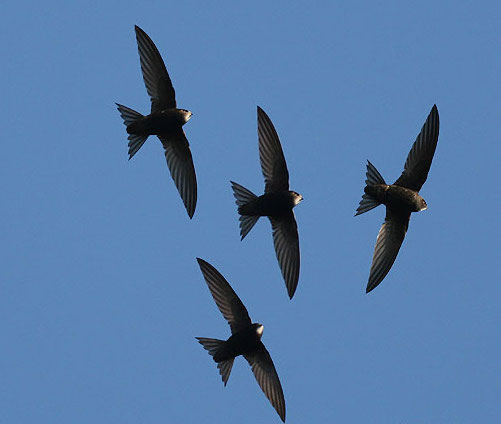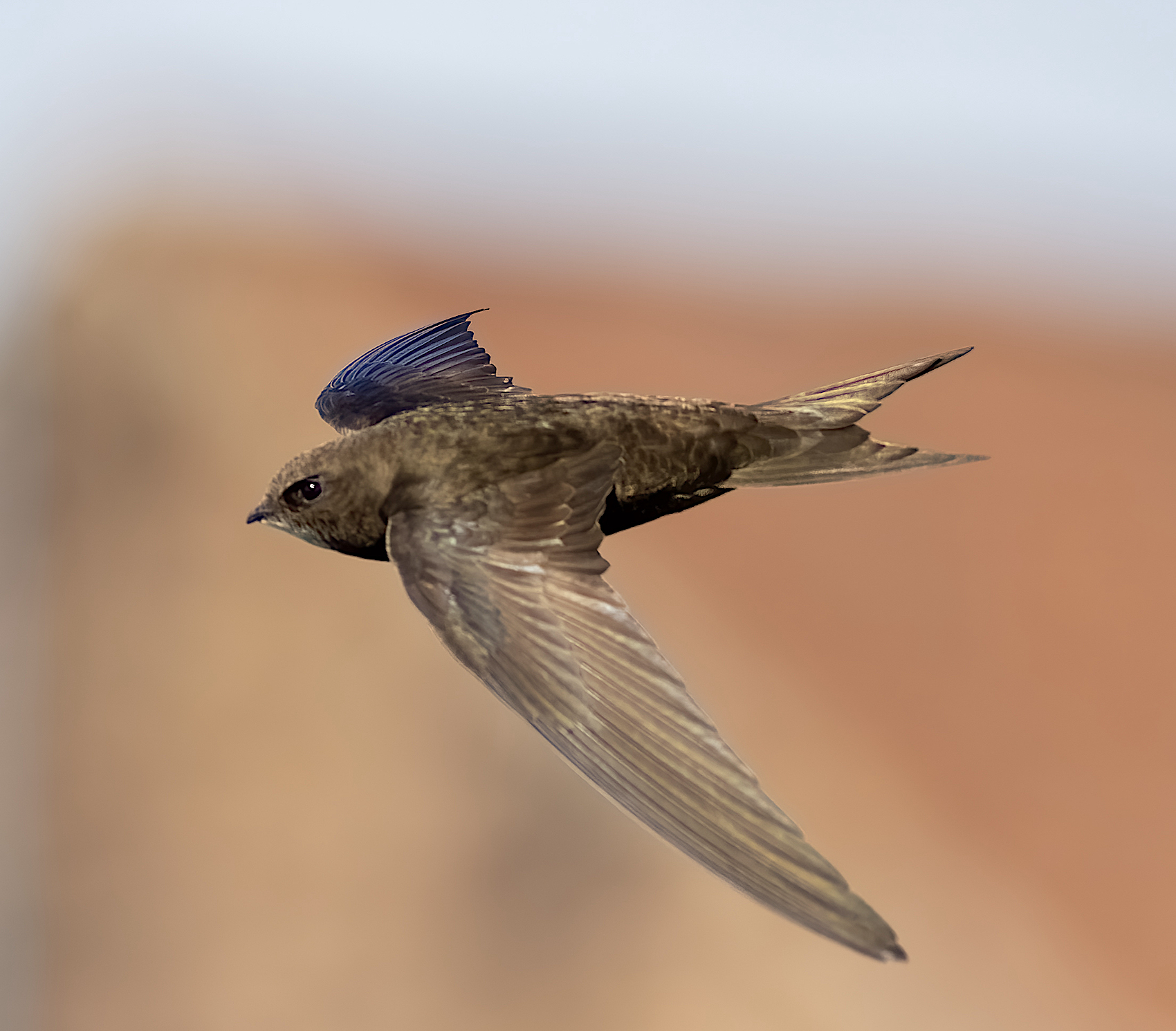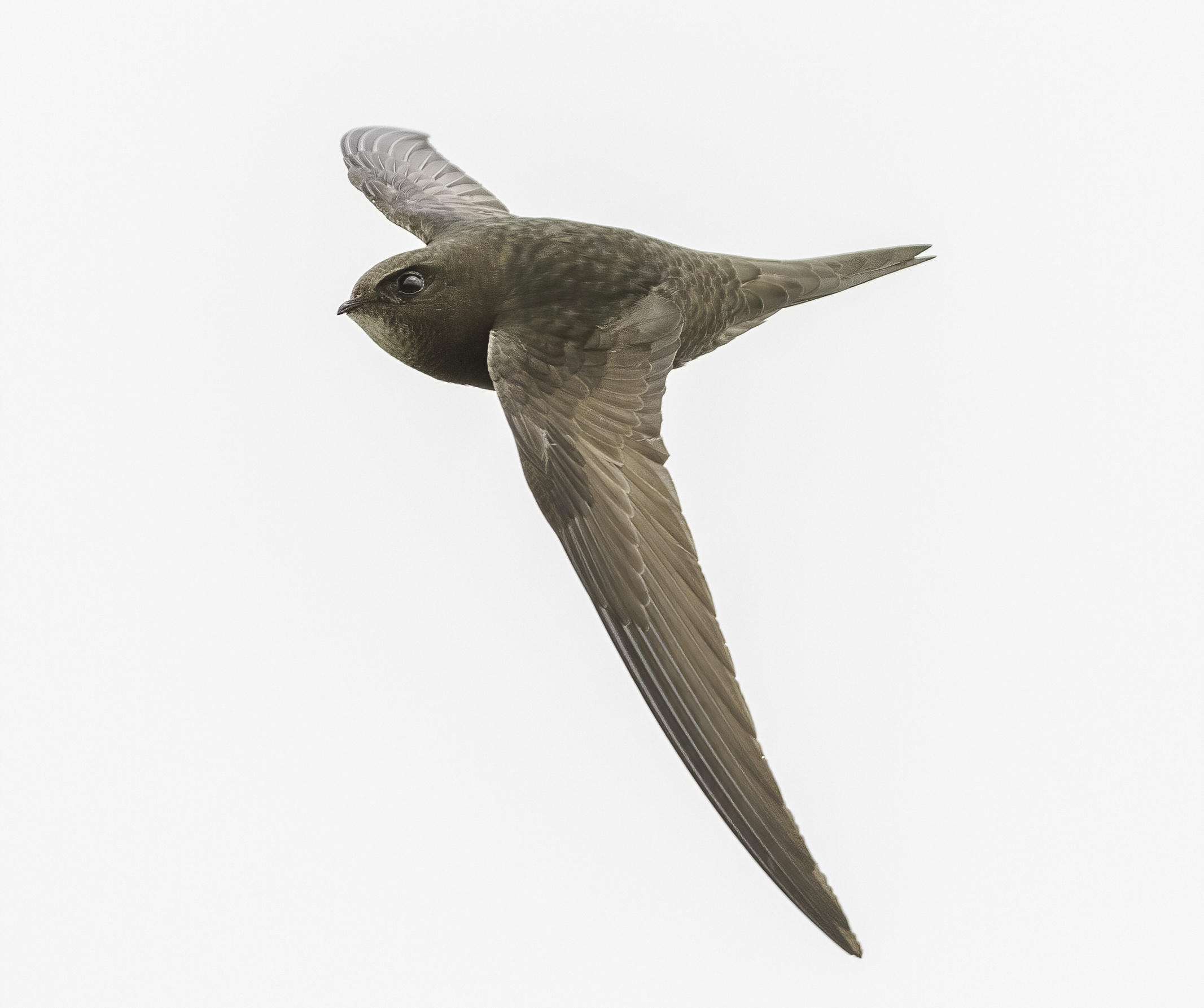Common Swift Apus apus
Very common but declining summer visitor and passage migrant.



Common Swifts: left, Fulbeck June 28th 2007 (Andrew Chick); centre, Barton June 2009 (Graham Catley): right, Covenham Reservoir June 9th 2013 (Barry Clarkson)
It will be obvious to many that the large screaming flocks of hundreds of Swifts of yesteryear so common in our town and villages are in decline, though they remain widely spread. The Atlas conservatively estimated the population at 10,000 pairs in the late 1980s. APEP4 estimated the British population at 59,000 pairs in 2016. The BBS index chart below reflects a steady and continuous fall of just over 70% in birds counted over the period from 1994 to 2019, though the BBS is not necessarily a good measure as Swifts tend to be away from nest sites feeding when BBS counts are made. The coast can experience large movements of feeding birds in summer in the right weather conditions. On the morning of Jun 29th, 2020, a stunning count of 45,844 birds was made at Gibraltar Point. Exactly where these birds were breeding is unknown, but the total represents nearly half of the British breeding population! Most breeding birds depart by the end of the first week of August but migrants are frequent into September and even later; such birds always receive detailed scrutiny.
(Account as per new Birds of Lincolnshire (2021), included September 2022)
